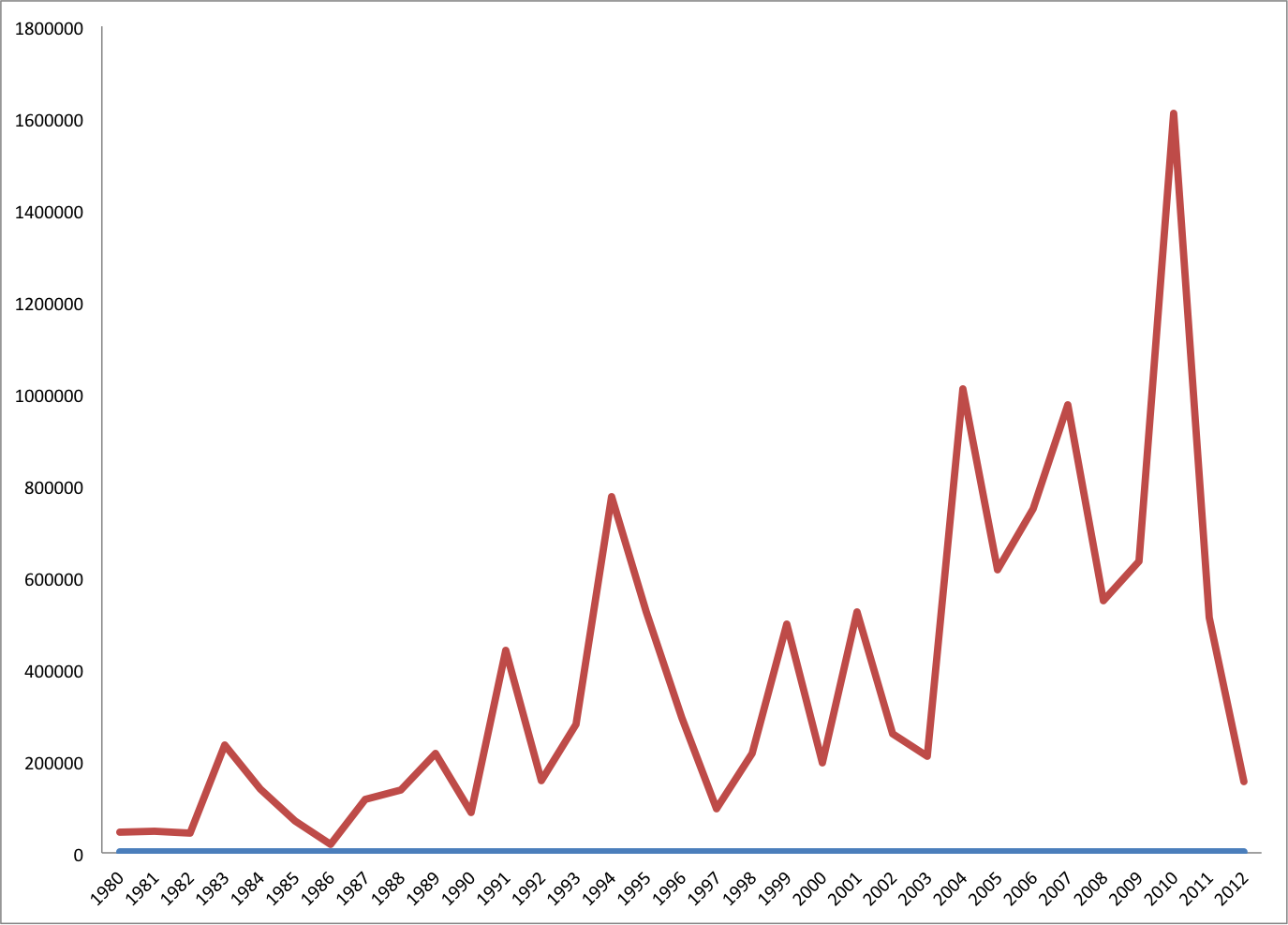NEH Funding for Gender Studies
For those of you who have read my last several blog posts, you know that I have been interested in analyzing and visualizing trends in humanities scholarship. Today, I've decided to examine funding for gender studies by the National Endowment for the Humanities. The data set that I am using comes from Indiana University's Cyberinfrastructure for Network Science Center. I began by searching through the more than 40,000 grants funded by NEH which are listed in the database. Using the keyword "gender," I pulled all grants that had "gender" listed in any field. I did not attempt to include grants with keywords that might be related to gender, such as "masculinity," "women's studies," etc. So, this data set includes only those grants in which the author explicitly related the project to the study of "gender."
I ended up with 376 grants. The data set included the zip codes of the institutions with which the scholars were associated, which allowed me to geocode the grants using the Sci2 tool. Unfortunately, the zip codes for the 14 projects led by independent scholars were not captured, and I was unable to include them in my geographical visualization.
Importing my data into a Google Fusion Table, I was able to map the grants. I also color-coded them by grant amount as indicated in the legend. Clicking on any point brings up the title of the grant, the awardee, and the year the grant was funded.
As I did in my last post, which analyzed article titles in the Journal of British Studies, I then normalized the text of the grant titles and used the Sci2 tool to run the Kleinberg burst detection algorithm. This algorithm identifies moments when keywords become particularly prevalent in discourse. The graph below indicates words which were particularly "bursty" in my data set. The weight of the line indicates the relative strength of the burst, while the length indicates how long it lasted.
The word "new" was problematic and skews the results in this graph. While a number of titles used concepts such as "the new gender studies," the word was more often associated with geography, such as "New York." Consequently, it could be removed from the diagram, but I have chosen to include it in order to demonstrate the potential problems associated with this type of analysis. As the chart indicates, the 1990s were a period in which authors seemed particularly concerned with "class" and "race" -- or, perhaps more accurately, thought that it was important to include these keywords in their grant titles.
My final chart examines the amount of funding for gender studies projects over time. The general trend in funding seems to be upward, but this is a very staggered trend. And, in 2012, there was a significant drop off in funding.


